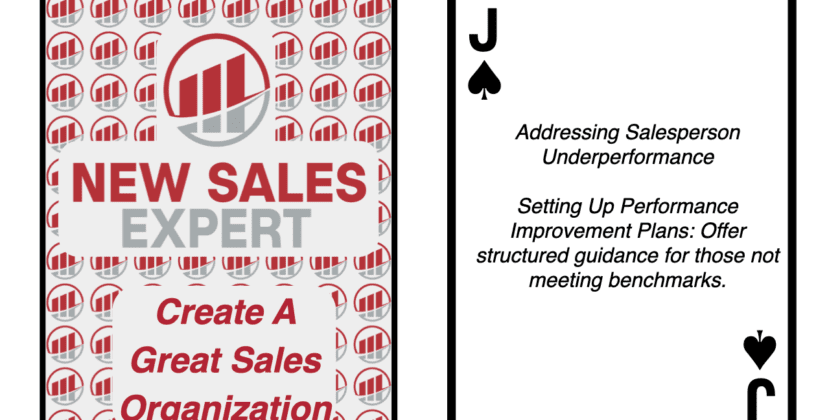In the tightly woven tapestry of a sales organization, each thread—each salesperson—must hold its own for the entire structure to maintain its integrity. Imagine a well-practiced orchestra where each musician is critical to the harmonious output. If even one violinist is off-key, it disrupts not just the symphony but also influences the collective perception of the audience. Similarly, when one salesperson consistently misses the mark, the dissonance affects not just their numbers but the collective performance and morale of the entire team.
Performance Improvement Plans: A Constructive Pathway, Not a Corporate Guilt-Trip
A prevalent misunderstanding of Performance Improvement Plans (PIPs) is their perceived function as a corporate guillotine, an ultimatum for those who underperform. But that’s far from the truth. When deployed with intent and care, a PIP serves as a roadmap that leads the lost back onto the path of productivity and achievement.
A Performance Improvement Plan starts with clarity. Specific, measurable, achievable, relevant, and time-bound (SMART) objectives are laid out. Suppose a salesperson faces difficulty in closing deals. The PIP would set a precise target, for example, improving the closing ratio by 20% over the next quarter.
But merely establishing ambitious milestones is an exercise in futility if not paired with the right tools and resources. It’s the responsibility of leadership to ensure that the salesperson has what they need to reach their new goals. This may include specialized training modules, mentorship from senior salespersons, or even software solutions that aid in customer relationship management.
Review and Reflection: The PIP Feedback Loop
Consistent monitoring and feedback mechanisms are integral to the PIP process. This is not about keeping tabs or playing “big brother,” but rather, establishing a feedback loop. These should be structured as collaborative dialogue, focusing on problem-solving rather than fault-finding. Once the set duration for the PIP ends, an in-depth review ensues. This is a pivotal moment that serves dual purposes—applauding improvement and identifying areas that require further fine-tuning.
Encompassing Compassion: People Over Numbers
While we emphasize numerical targets and performance metrics, we must not lose sight of the human element. Performance Improvement Plans should be designed and implemented with an empathetic understanding of the unique circumstances affecting each salesperson’s performance. The PIP, therefore, becomes not just a tool for improving metrics but also a gesture of organizational compassion and well-being.
It’s worth remembering that instilling a culture of Performance Improvement Plans is not merely a strategy to elevate individual salespersons; it’s a mirror reflecting the maturity of an organization and its investment in its people. It’s about showing that the organization values sustained effort and long-term growth over short-lived gains and snap judgments.
The Sculptor’s Patience
Implementing a Performance Improvement Plan is similar to the patience exhibited by a sculptor. When faced with an unpolished stone, instead of discarding it outright, the sculptor sees potential. With measured chisel strikes, what was once a mere rock transforms into art. Similarly, PIPs offer that measured guidance, turning the rough stone of underperformance into the refined sculpture of a high-performing sales asset. Through this targeted, compassionate approach, leaders not only foster individual success but contribute to building an organizational culture centered on growth, empathy, and resilience.









